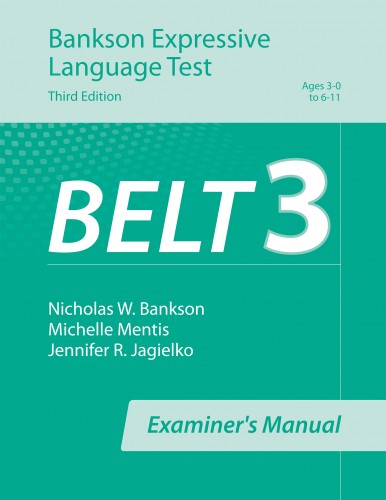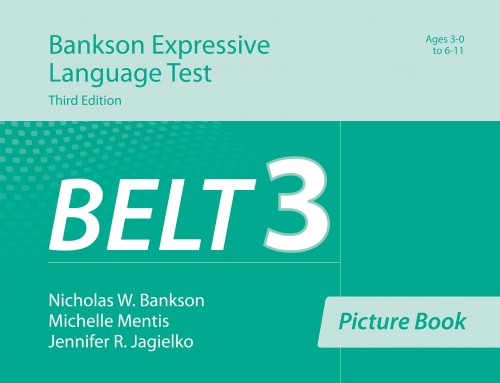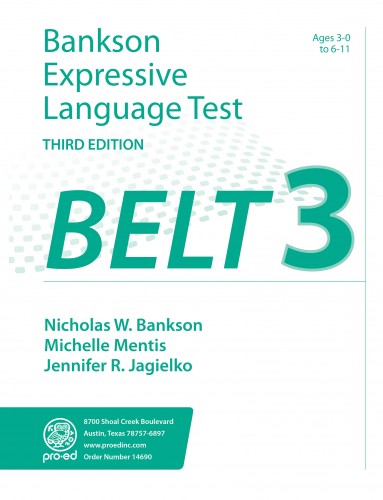Price $225.00
$199.95
Contents
-

Bankson Expressive Language Test (BELT-3)
BELT-3 Examiner's Manual
Third Edition
*Not available separately (package component only)
-

Bankson Expressive Language Test (BELT-3)
BELT-3 Picture Book
Third Edition
*Not available separately (package component only)
-

Bankson Expressive Language Test (BELT-3)
BELT-3 Examiner Record Booklets (25)
Third Edition
$54.00
- An all-new standardization sample (2014–2016) was collected.
- The picture book illustrations have been enhanced and colorized to make them more appealing to young children.
- Administration time has been reduced by the addition of ceiling rules in many of the test sections.
- The Lexical Semantics subtest has been expanded to include the naming of adjectives and synonyms, as well as more difficult items to span a wider developmental range.
- The Morphology and Syntax subtest has been expanded to include phrase expansions, simple declarative sentence forms, and compound and complex sentences to capture a wider range of grammatical structures.
- All-new item analysis and item bias studies provide convincing evidence of content-description validity.
- Enhanced reliability and validity studies were prepared, including diagnostic accuracy analyses, which are considered the most rigorous techniques for establishing a test’s validity. These analyses involve the computation of sensitivity and specificity indexes and the receiver operating characteristic/area under the curve (ROC/AUC) statistic.
-

Bankson Expressive Language Test (BELT-3)
BELT-3 Examiner Record Booklets (25)
Third Edition
$54.00 -

Bankson Expressive Language Test (BELT-3)
BELT-3 Examiner's Manual
Third Edition
*Not available separately (package component only)
-

Bankson Expressive Language Test (BELT-3)
BELT-3 Picture Book
Third Edition
*Not available separately (package component only)
-

Bankson Expressive Language Test (BELT-3)
BELT-3 Container (Storage Box)
cardboard container
*Not available separately (package component only)
- Copyright 2018

 Proud to be Canadian
Proud to be Canadian